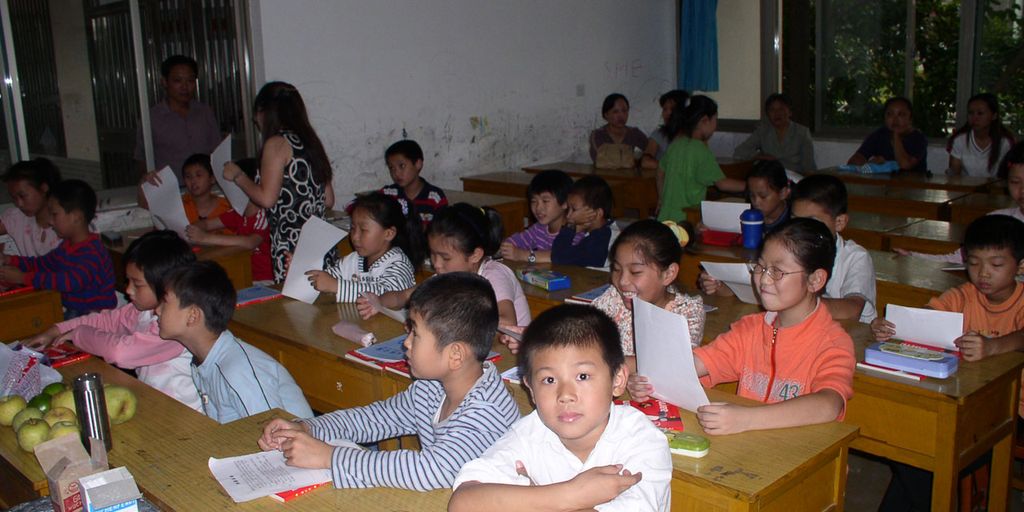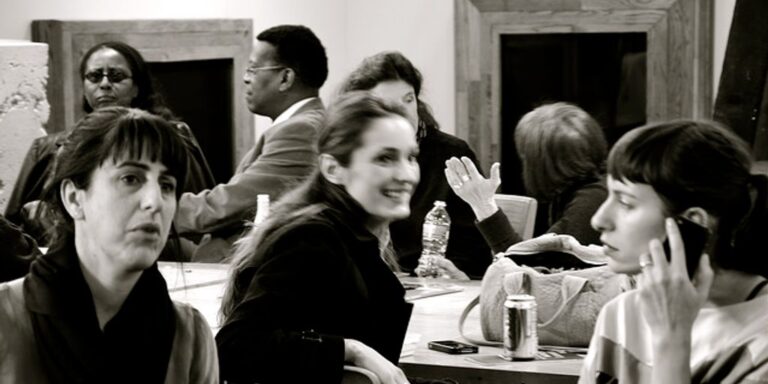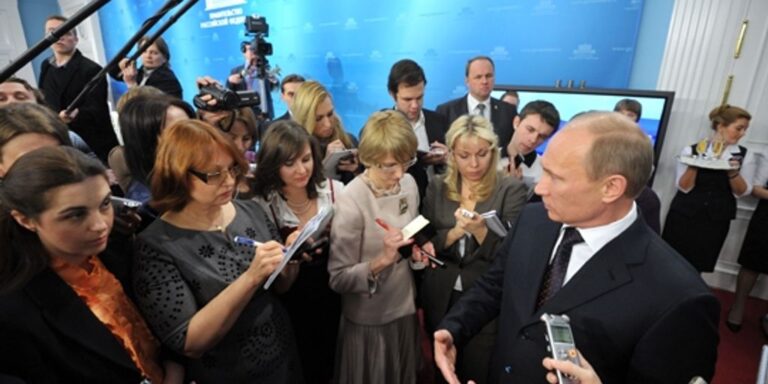The involvement of Russian girls in science education has been significantly shaped by historical, cultural, and social factors. This article explores the multifaceted role of Russian girls in STEM fields, tracing the evolution from the Soviet era to the present day and examining the challenges and opportunities they face.
Key Takeaways
- Russian girls have a strong legacy of participation in STEM due to Soviet educational policies which emphasized science and technology.
- Current trends show a high enrollment of Russian girls in STEM fields, supported by government initiatives and societal encouragement.
- Despite progress, Russian girls still face gender stereotypes and cultural barriers in pursuing science and technology careers.
- Success stories and media representation are crucial in shaping a positive narrative and inspiring future generations of Russian girls in STEM.
- Looking forward, technological advancements and supportive policies could further enhance the participation and success of Russian girls in STEM.
The Historical Roots of Russian Girls in Science
Soviet Legacy in STEM Education
The remarkable gender balance in science and technology in Russia is largely a legacy of the Soviet state. The Soviet era was marked by generalized efforts to improve the overall quality of instruction in math and hard sciences, which included significant support for women’s employment in government-funded facilities. This foundation has shaped the current landscape where many female technical specialists believe that women can achieve anything if they are motivated and professional.
The Rise of Women in Science and Technology
During the Soviet times, there was a concerted push to include more women in the fields of science and technology. This period saw an increase in the number of women pursuing and succeeding in these fields, setting a precedent that continues to inspire today’s generation. The rise of women in these areas during the Soviet era serves as a powerful reminder that barriers can be broken, and gender does not define one’s ability in science and technology.
Impact of Historical Policies on Current Trends
Current trends in the participation of Russian girls in STEM can be traced back to historical policies. These policies not only supported women in science but also actively promoted their involvement. This historical backing has led to a more inclusive environment in STEM fields today, where Russian girls continue to thrive and make significant contributions.
Current Landscape of STEM Education for Russian Girls

Enrollment Trends in STEM Fields
The enrollment of Russian girls in STEM fields has seen a steady increase over the past decade. This trend is supported by various educational reforms and a growing societal acceptance of women in science and technology roles. Notably, the proportion of female students in STEM at higher education levels remains robust, although it slightly tapers off in professional settings.
Government Initiatives and Support
The Russian government has launched several initiatives aimed at boosting the participation of girls in STEM education. These include scholarships, grants, and targeted programs that encourage young women to pursue careers in science and technology. The impact of these initiatives is visible in the enhanced enrollment figures and the heightened interest among young women to engage in STEM disciplines.
Challenges and Opportunities
While the landscape is promising, challenges persist. Gender stereotypes and societal expectations still pose significant barriers. However, these challenges also present opportunities for policy makers and educators to innovate and implement strategies that not only attract but also retain girls in STEM fields. The focus is increasingly on creating an inclusive environment that supports the educational and professional growth of Russian girls in science and technology.
Breaking Stereotypes: Russian Girls in STEM

Combatting Gender Stereotypes
In the realm of STEM, gender stereotypes continue to be a significant barrier for Russian girls. Despite their proven capabilities, societal norms often pigeonhole them into traditional roles. Efforts to combat these stereotypes are crucial for fostering a more inclusive environment where girls can thrive without bias.
Success Stories of Female Scientists and Engineers
The narrative is changing, thanks to the numerous success stories of Russian female scientists and engineers. These role models demonstrate that women are not only capable but also excel in these fields. Highlighting these successes helps inspire the next generation of girls to pursue STEM.
Role of Media and Society
The media plays a pivotal role in shaping perceptions. By promoting positive images of women in STEM and highlighting their achievements, the media can help shift public opinion and encourage more girls to consider these fields as viable and rewarding career options.
Educational Pathways for Russian Girls in Science

Key Stages of Educational Development
The journey of Russian girls in science education begins early, often in primary school, where initial interest is sparked. The critical stages include secondary education where specialized subjects are introduced, and higher education where they can focus on specific STEM fields. The transition from general education to specialized STEM education is crucial and needs to be seamless to maintain interest and reduce dropout rates.
Influence of Family and Teachers
Family and teachers play a pivotal role in shaping the educational pathways of Russian girls in science. Encouragement and support from these key figures can greatly influence a girl’s decision to pursue a career in STEM. Mentorship, especially from female role models in the science community, is also crucial in sustaining their interest and confidence in these fields.
Access to Resources and Materials
Access to quality resources and educational materials is essential for fostering a conducive learning environment. This includes not only textbooks and laboratory equipment but also exposure to real-world science applications and research opportunities. Efforts to improve access to digital resources and online platforms are also vital in expanding learning opportunities for Russian girls in remote or underserved areas.
Professional Opportunities for Russian Girls in STEM

Career Prospects in Russia and Abroad
The landscape of career opportunities for Russian girls in STEM is both diverse and promising. Opportunities for professional development are abundant, ranging from academic roles in prestigious universities to dynamic positions in the tech industry. However, the journey to the top positions often presents substantial barriers, especially for those aiming to climb the career ladder.
Corporate vs. Academic Roles
Choosing between corporate and academic paths can significantly influence one’s career trajectory. Corporate roles often offer quicker financial rewards and opportunities for practical application of skills. In contrast, academic positions emphasize research and education, appealing to those who wish to contribute to scientific knowledge and mentor the next generation of STEM professionals.
Networking and Mentorship
Effective networking and strong mentorship are crucial for advancing in STEM fields. Engaging in seminars and meetings with successful female engineers and participating in small group discussions can boost confidence and engagement. These interactions not only provide support but also open doors to new opportunities and collaborations, essential for professional growth and success.
Cultural Influences on Russian Girls in STEM

Traditional vs. Modern Views
In Russia, the tug-of-war between traditional and modern views significantly shapes the educational and career choices of girls in STEM. Traditionally, roles in science and technology were often seen as male-dominated, but modern perspectives increasingly advocate for gender equality in these fields. This shift is evident in the growing number of female students enrolling in STEM programs.
Impact of Cultural Norms on Career Choices
Cultural norms play a pivotal role in shaping career choices among Russian girls. For instance, societal expectations often pressure women to prioritize family over career, which can deter them from pursuing long-term educational goals in STEM. However, there is a rising trend of women who challenge these norms by excelling in STEM careers and becoming role models for future generations.
Community Support and Resistance
The level of community support can vary greatly across different regions of Russia. In some areas, there is strong backing for women in STEM, facilitated by community-led initiatives and educational programs. Conversely, in other regions, there might be resistance or lack of support, making it challenging for girls to pursue careers in these fields. An example of community support can be seen in urban areas like Moscow, where educational programs and STEM-focused events are more prevalent compared to rural areas.
Overall, while there are challenges, the increasing support from various community and educational initiatives indicates a positive trend towards more inclusive STEM education for Russian girls.
Technological Advancements and Their Impact on Education

Innovations in Teaching Methods
The integration of advanced technologies into teaching methods has revolutionized the educational landscape for Russian girls in STEM. Interactive tools and virtual labs have made learning more engaging and accessible, breaking down the traditional barriers of geography and resources. Boldly, these innovations are setting a new standard in education, ensuring that students not only understand theoretical concepts but also apply them in real-world scenarios.
Role of Online Learning Platforms
Online learning platforms have become a cornerstone in the education of Russian girls in STEM. These platforms offer a plethora of courses ranging from basic programming to advanced computational theories, enabling personalized learning paths that are flexible and scalable. The convenience and accessibility of online education allow students from remote areas, such as those dating in Chelyabinsk, to access quality education without the need to relocate.
Adapting to New Technologies
As new technologies continue to emerge, the educational sector must keep pace. This involves not only integrating these technologies into the curriculum but also training educators to effectively use them. The rapid adaptation to new technologies is crucial for maintaining the relevance and efficacy of STEM education, preparing Russian girls to be proficient and competitive in the global tech arena.
The Role of Non-profits and NGOs in Supporting Russian Girls

Programs and Initiatives
Non-profits and NGOs play a crucial role in shaping the educational landscape for Russian girls in STEM. By launching various programs and initiatives, these organizations provide essential resources and opportunities that might not be otherwise available. These efforts are pivotal in empowering young women to pursue careers in science and technology.
Collaborations with Schools and Universities
Collaboration between non-profits, NGOs, and educational institutions is key to creating a supportive ecosystem for Russian girls in STEM. These partnerships often result in enhanced curriculum, additional resources, and mentorship programs that directly benefit students.
Success Metrics and Impact Analysis
To gauge the effectiveness of their programs, many organizations implement rigorous methods for measuring success and analyzing impact. This data-driven approach helps in refining strategies and ensuring that the resources are being used to maximum effect.
Future Prospects for Russian Girls in STEM

Predictions and Trends
The landscape of STEM fields is ever-evolving, and for Russian girls, the future looks promising. Bold predictions suggest a surge in female participation, especially in emerging tech sectors. This uptick is fueled by progressive educational reforms and a societal shift towards gender equality in science and technology.
Potential for Growth in Emerging Fields
Russian girls are poised to make significant inroads into next-gen technologies like AI, biotechnology, and renewable energy. The focus is not just on participation but on leading innovations. This potential for growth is supported by a robust educational foundation and targeted government initiatives aiming to reduce the gender gap in STEM.
Government and Private Sector Roles
Both the government and private sectors play pivotal roles in shaping the STEM opportunities available to Russian girls. Enhanced funding, scholarships, and internship programs are part of this support system. Moreover, the private sector’s commitment to diversity has led to more inclusive hiring practices, which could see more women in leadership roles within STEM fields in the near future.
Comparative Analysis: Russian Girls in Global STEM Education

When comparing the state of STEM education for Russian girls to their global counterparts, several interesting trends emerge. Russia shows a unique blend of high enrollment rates and significant challenges that differ markedly from patterns seen in Western countries.
Russia vs. Other Countries
In terms of enrollment, Russian girls participate in STEM at one of the highest rates globally. However, when it comes to professional engagement post-education, there’s a noticeable drop-off. This contrasts with countries like the USA and Germany, where female STEM graduates are more likely to continue in their fields.
Factors Driving Success
Key factors contributing to the success of STEM education in Russia include strong governmental support and a legacy of scientific excellence dating back to the Soviet era. However, cultural stereotypes and insufficient career guidance still pose significant barriers.
Areas for Improvement
To enhance the effectiveness of STEM education for Russian girls, it is crucial to address these cultural stereotypes and improve career counseling services. Additionally, increasing the visibility of successful female role models in STEM can inspire more young women to pursue and persist in these careers.
Personal Development and Soft Skills in STEM Education
Importance of Soft Skills
In the realm of STEM, where technical skills are often prioritized, the importance of soft skills cannot be overstated. Effective communication, teamwork, and problem-solving abilities are crucial for success in any scientific or technological field. These skills help students navigate complex projects and foster a collaborative environment.
Integrating Personal Development into Curriculum
To truly prepare Russian girls for the challenges of STEM careers, educational programs must integrate personal development into their curricula. This includes teaching methods that focus on building confidence and encouraging critical thinking, which are essential for young women entering these fields.
Challenges in Soft Skills Education
Despite the recognized importance, there’s a gap in soft skills education. Many programs still focus heavily on hard skills, leaving students underprepared for the interpersonal demands of the workplace. Innovative teaching strategies and more holistic educational approaches are needed to bridge this gap.
Challenges and Solutions in STEM Education for Russian Girls

Identifying Key Barriers
In the journey to enhance STEM education for Russian girls, identifying the key barriers is crucial. These barriers often include societal stereotypes, lack of role models, and insufficient access to STEM resources. Boldly addressing these issues is essential for progress.
Innovative Solutions Being Implemented
To combat these challenges, various innovative solutions are being implemented. These include:
- Introduction of mentorship programs with successful female scientists.
- Development of STEM-focused educational content that is engaging and relatable.
- Organization of workshops and seminars to boost girls’ confidence in STEM.
Role of Policy Changes
Policy changes play a pivotal role in shaping the educational landscape. Effective policies can provide the necessary support and resources, ensuring that every girl has the opportunity to pursue a STEM education. It’s about creating an environment where girls are encouraged and supported to explore and excel in STEM fields.
Navigating the educational landscape for Russian girls in STEM can be fraught with challenges, from societal stereotypes to a lack of role models. However, solutions are emerging through dedicated platforms that offer support and resources tailored specifically for these young aspirants. To learn more about how we can empower and support the next generation of female STEM leaders, visit our website and join our community.
Conclusion
In wrapping up, the journey of Russian girls in science education is not just a tale of overcoming barriers but a celebration of enduring success and cultural legacy. From the Soviet era’s emphasis on science and technology to today’s continued support and encouragement, Russian girls have been and continue to be pivotal in shaping a future where gender does not dictate one’s role in STEM fields. This narrative isn’t just about statistics and policies; it’s about the aspirations and achievements of countless young women who are both inspired by and contributing to the scientific landscape in Russia. Their stories are a testament to the power of education and the importance of providing equal opportunities for all.
Frequently Asked Questions
What is the historical impact of Soviet policies on the participation of Russian girls in STEM?
Soviet-era policies significantly boosted the participation of women in STEM through educational reforms and government support, fostering a culture that valued gender equality in science and technology fields.
How are current government initiatives supporting Russian girls in STEM?
Current initiatives include funding for STEM programs, scholarships specifically for women, and campaigns aimed at increasing the visibility and participation of girls in science and technology fields.
What challenges do Russian girls face in STEM education today?
Challenges include persistent gender stereotypes, a lack of female role models in senior STEM positions, and societal expectations about gender roles.
Can you share a success story of a Russian female scientist or engineer?
One notable example is the achievement of Russian women who have excelled in fields like space exploration and computer science, often receiving international recognition for their work.
What role does media play in shaping the perceptions of Russian girls in STEM?
Media plays a crucial role by either reinforcing stereotypes or helping to break them down through positive representation and highlighting the achievements of female scientists and engineers.
How does family influence the educational pathways of Russian girls in science?
Families can play a supportive role by encouraging interest in science from an early age, providing educational resources, and fostering a belief in their daughters’ abilities to succeed in STEM fields.
What are the career prospects for Russian girls who pursue STEM?
Career prospects are broad and include opportunities in academia, industry, and research institutions both in Russia and internationally, depending on their area of specialization and level of expertise.
How do cultural norms impact the career choices of Russian girls in STEM?
Cultural norms can either hinder or promote careers in STEM, depending on how much they value traditional gender roles versus modern views on women’s participation in the workforce.






















+ There are no comments
Add yours